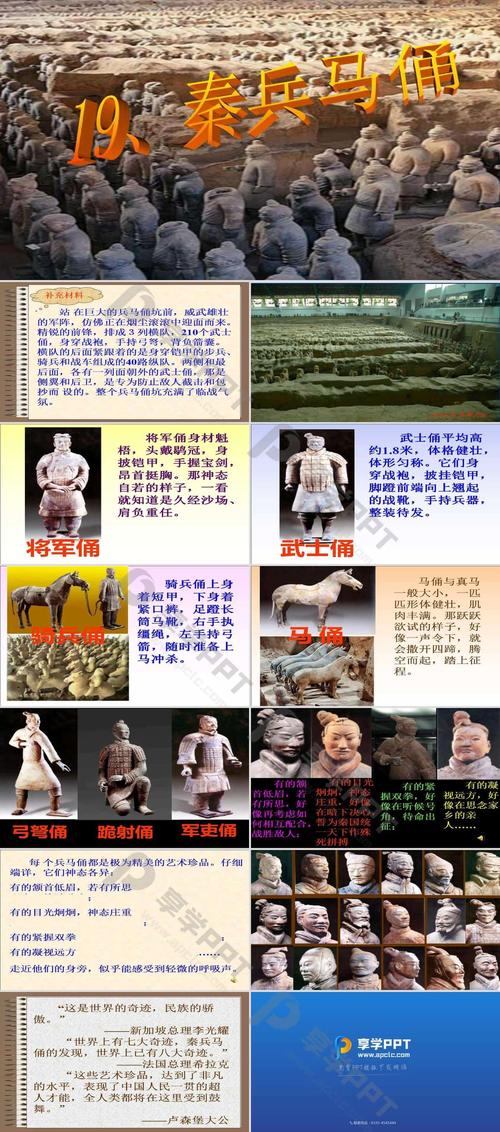
你的要求中似乎包含了一段关于印度Dharmathakur神灵习俗的描述,这与兵马俑的主题并不相关。兵马俑是中国的文物,与印度的宗教习俗没有联系。
为了确保文章内容准确,我将忽略这段描述,并专注于解释兵马俑的意义。以下是用英文撰写的关于兵马俑的文章:
The Significance of the Terracotta Army
The Terracotta Army is one of the most iconic archaeological discoveries of the 20th century. Unearthed in 1974 near Xi'an, China, the army comprises thousands of life-sized terracotta figures of warriors, horses, and chariots, all buried alongside the first emperor of China, Qin Shi Huang. This vast and meticulously crafted army offers a unique window into the military might, artistry, and beliefs of ancient China.
Protection and Power in the Afterlife
The primary significance of the Terracotta Army lies in its intended purpose: to protect and serve Emperor Qin Shi Huang in the afterlife. Qin Shi Huang, known for his ambition and desire for immortality, envisioned ruling even after death. The Terracotta Army, a silent guardian in the afterlife, reflected this desire, showcasing his power and ensuring his continued dominance.
A Display of Military Might
The sheer scale and detail of the Terracotta Army underscore the military prowess of the Qin dynasty. Each figure, from the infantrymen to the charioteers, is depicted with meticulous detail, showcasing the armor, weaponry, and military formations of the time. This intricate representation provides invaluable insights into the military organization and strategies of ancient China, highlighting the significance of military power in Qin Shi Huang’s reign.
Artistic and Technological Prowess
Beyond their military significance, the Terracotta figures stand as a testament to the artistic and technological achievements of the Qin dynasty. Each figure is unique, with individualized facial features, hairstyles, and expressions, showcasing the remarkable skill and craftsmanship of the artisans involved. The techniques used in creating these life-sized figures, from the molding process to the application of paint and glaze, reveal a sophisticated understanding of materials and artistry.
A Window into Ancient Beliefs
The Terracotta Army offers a fascinating glimpse into the beliefs and practices surrounding death and the afterlife in ancient China. The meticulous burial arrangements, the inclusion of weapons and chariots, and the sheer scale of the undertaking highlight the importance placed on preparing for the afterlife. This elaborate display reflects the belief that the deceased could continue to wield power and influence in the next world, underscoring the cultural and religious beliefs of the time.
Conclusion
The Terracotta Army remains a source of wonder and fascination, offering valuable insights into the history, culture, and beliefs of ancient China. From its intended purpose of protecting the emperor in the afterlife to its testament to artistic and technological skill, the Terracotta Army stands as a powerful symbol of China’s rich heritage.
Q&A
-
Q: How many figures are estimated to be in the Terracotta Army?
- A: While excavations are ongoing, it's estimated that the Terracotta Army consists of over 8,000 soldiers, 130 chariots with 520 horses, and 150 cavalry horses.
-
Q: What makes each Terracotta warrior unique?
- A: Each warrior was crafted with unique facial features, hairstyles, armor, and expressions, reflecting the individuality of the artisans and the diversity within the Qin army.
-
Q: Why was the Terracotta Army painted?
- A: The figures were originally painted in vibrant colors to enhance their realism and reflect the splendor of the Qin dynasty. However, much of the paint has faded due to exposure to air and elements upon excavation.